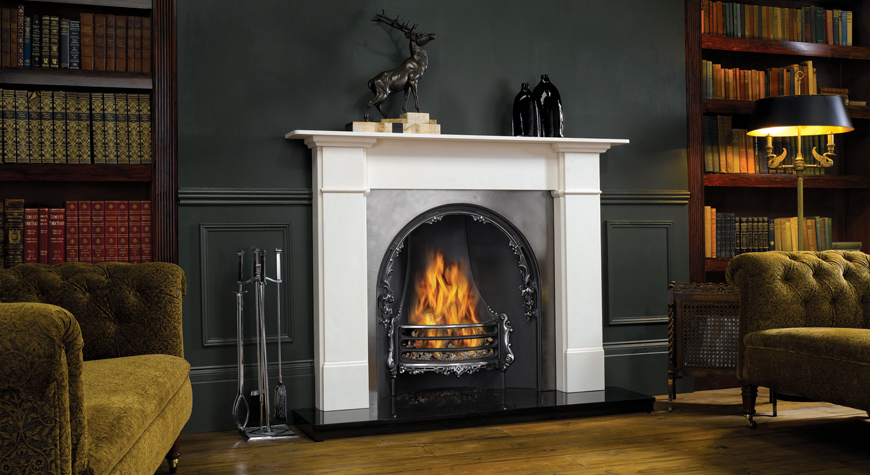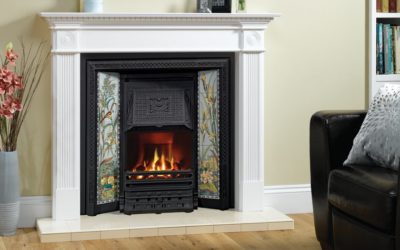Your fireplace should be the heart of your home, but if it isn’t performing properly, much of your warmth could literally be going up the chimney. At House of Fires Malvern, we often meet homeowners who don’t realise how small oversights can have a big impact on efficiency.
Whether you’re using a traditional open hearth, a gas stove, or a modern wood-burner, here are the five most common fireplace efficiency mistakes and how to fix them for a cosier, more energy-efficient home.
1. Letting Heat Escape Up the Chimney
One of the biggest efficiency killers is an open chimney left unsealed when the fire isn’t in use. Warm air from your room rises straight out, pulling cold air back in through gaps and windows.
How to Fix It
- Fit a chimney balloon or draught excluder when your fire is not in use.
- Install a top-sealing damper to stop heat loss year-round.
- For live fires, consider upgrading to a glass-fronted insert, it retains warmth while still showing the flames.
A small change can reduce heat loss by up to 80% in older properties.
2. Burning the Wrong Fuel
Using damp or unseasoned wood is one of the fastest ways to waste energy, it produces more smoke than heat and leads to creosote build-up in your flue.
How to Fix It
- Only burn seasoned hardwood (such as oak or ash) with moisture content below 20%.
- Store logs in a dry, ventilated area for at least a year before use.
- Consider a Ready to Burn-certified supplier for consistent quality.
Dry wood burns hotter and cleaner, making your fire more efficient and your chimney safer.
3. Neglecting Regular Maintenance
A blocked or dirty flue can cause poor draw, excess smoke, and wasted heat. Even modern gas and electric fires benefit from routine checks to maintain top performance.
How to Fix It
- Have your chimney swept at least once a year (twice for frequent use).
- Book an annual service for gas or electric models.
- Check door seals and firebricks on stoves for wear and tear.
A well-maintained fireplace burns hotter, cleaner, and lasts much longer.
4. Over- or Under-Fueling the Fire
It’s easy to assume that adding more logs means more heat, but that’s not always true. Over-fueling restricts airflow, causing incomplete combustion and wasted energy.
How to Fix It
- Follow your manufacturer’s recommended loading size.
- Use a stove thermometer to monitor burn temperature.
- Keep air vents open until flames are established, then adjust gradually.
The goal is a bright, steady burn, not a roaring inferno.
5. Ignoring Modern Efficiency Upgrades
Even with perfect technique, older open fires will never match the efficiency of modern appliances. Many homeowners lose significant warmth simply because their fireplace isn’t designed to retain heat.
How to Fix It
- Upgrade to a high-efficiency wood-burning stove or gas fire.
- Add a fireback or convection grate to reflect and circulate heat.
- Consider EcoDesign-ready models, which meet the latest UK emission and efficiency standards.
Modern fireplaces can achieve 80–90% efficiency, compared with around 20% for open fires.
Bonus Tip: Choose the Right Expert
Even the most efficient fire can underperform if it’s poorly installed. That’s why it’s important to work with Gas Safe or HETAS-certified professionals who understand both safety and performance.
At House of Fires Malvern, we assess your current setup, recommend practical upgrades, and handle every stage from supply to installation. Our fireplace showroom features working displays where you can see efficiency in action, before you buy.
Final Thoughts
Fireplace efficiency isn’t just about technology, it’s about care, fuel, and small daily habits that add up. By avoiding these common mistakes, you’ll enjoy a warmer home, lower bills, and a more sustainable way to heat your living space.
Visit House of Fires Malvern to explore modern, high-efficiency fires and stoves, or book a consultation to discover how your existing fireplace could perform better.
FAQs
1. What’s the easiest way to improve fireplace efficiency?
Start by sealing your chimney when not in use, burning seasoned wood, and booking a professional inspection each year.
2. How do I know if my fire is burning efficiently?
A bright flame with minimal smoke usually indicates efficient combustion. Dark smoke or excessive soot means it’s time for a service.
3. Can an open fire ever be efficient?
With upgrades like glass inserts or firebacks, you can improve output, but enclosed stoves remain far more efficient overall.



